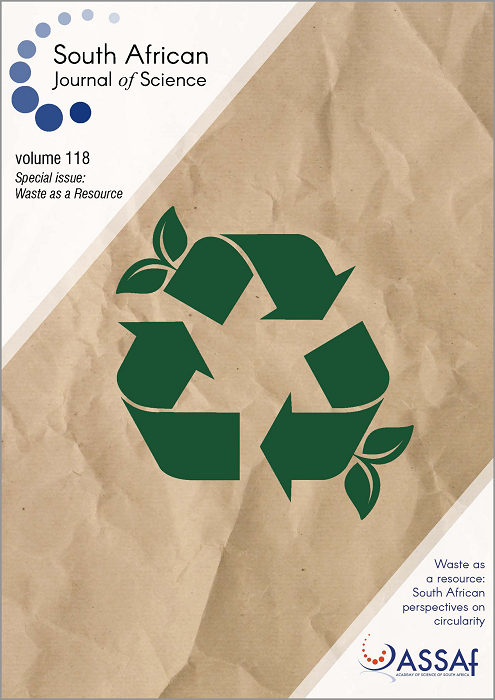Exploring community perceptions of illegal dumping in Fisantekraal using participatory action research
DOI:
https://doi.org/10.17159/sajs.2022/12563Keywords:
illegal dumping, perceptions, participatory action research, engagement, communityAbstract
We present the results from two interactive methodologies (interview and focus groups) that were used as part of a participatory action research (PAR) project to identify the reasons for and solutions to illegal dumping in Fisantekraal, Cape Town, South Africa. Worldwide, PAR has been applied in the context of marginalised groups and in different fields to stimulate dialogue amongst research participants, with the ultimate goal of promoting social change. The opinions expressed by the research participants (community members, NGOs, municipal officials, academics) demonstrate that the voices of the community matter and illustrate the transformative potential of the PAR methodology to change the status of stakeholder engagement in decision making regarding a pressing concern such as illegal dumping in community. The research discussed here led to some planning of initiatives and to planned change because the conversations/interviews/focus groups at least allowed people to come together to discuss possibilities. It helped the community and other stakeholders to come together and share their views of the problem and to plan together for what could work to curb illegal dumping. Community projects were subsequently initiated, and their impact will be evaluated in future research.
Significance:
- This study shows the potential of the PAR process to facilitate conversations about a particular issue between various stakeholders in a community where effective communication is challenging. The inclusivity of PAR allows for the voices of marginalised communities to be heard and allows people to take ownership of an issue in their community, such as illegal dumping.
Published
Issue
Section
License

All articles are published under a Creative Commons Attribution 4.0 International Licence
Copyright is retained by the authors. Readers are welcome to reproduce, share and adapt the content without permission provided the source is attributed.
Disclaimer: The publisher and editors accept no responsibility for statements made by the authors
How to Cite
- Abstract 1029
- PDF 868
- EPUB 331
- XML 297
Funding data
-
Department of Science and Innovation, South Africa
-
National Research Foundation
-
Council for Scientific and Industrial Research, South Africa
Grant numbers CSIR/IU/WRIU/2018/019












.png)